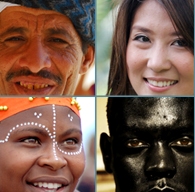 When you recognize a friend’s face, how do you know? Do you make a careful study of their nose and cheekbones? Are you thrown off if they don’t wear the usual expression?
When you recognize a friend’s face, how do you know? Do you make a careful study of their nose and cheekbones? Are you thrown off if they don’t wear the usual expression?
The vast majority of people probably scoffed at those questions. Facial recognition isn’t a matter of careful study, but instead it is an instantaneous process. Your brain just knows whose face you are seeing. As Tim Newman pointed out in Medical News Today, this underscores how incredible the process of facial recognition is, given the complexity of and similarities between the thousands of faces we see on a regular basis.
Not only is facial recognition itself a remarkable ability, but it is closely tied with crucial cognitive functions.
Facial recognition is a key part of understanding emotional expressions. Humans use facial recognition skills to detect deviations from normal or prototypical expressions. This process involves noticing when brows are furrowed or eyes are squinted, instantly comparing those expressions with what is expected upon seeing a face.
Because the recognition of a face is instantaneous, it is only a small cognitive step towards noticing when the face appears differently than expected, and this difference is then analyzed as displaying a certain emotion.
The ability to perceive emotions in this fashion appears to be a basic human feature. The same sort of basic human expressions, such as anger, revulsion, and sadness are found across the world, from Japan to Borneo to the United States. Even emotions displayed in ancient cave paintings show similar expressions!
Similarly, by recognizing faces in this sense, humans also make quick judgments as to the attractiveness of an unfamiliar face. They may often be unable to explain why a face seems attractive or not, just as we are unable to describe exactly how we recognize familiar faces or emotions. We immediately process many factors, including facial symmetry, to develop these impressions.
In fact, the ability to recognize and process faces in this fashion is deeply rooted in our species. Human babies can even differentiate between human and, for example, gorilla faces at an incredibly early age. While 3-month olds can tell human and gorilla bodies apart, even newborn babies can distinguish faces.
And it isn’t just humans! Other primates have a similar ability. Chimpanzees, who have the most similar recognition skills to humans, quickly identify familiar faces, and they can even distinguish familiar family characteristics in unfamiliar faces. This is similar to when we meet someone and notice that they look like a cousin or a sibling.
Understanding this incredible ability has many practical implications, even if they may not seem immediately obvious. Most intuitively, the ability to recognize faces is important for law enforcement work and eyewitness testimony. Witnesses must be able to correctly recognize the faces of criminal suspects, and law enforcement officers must recognize faces from security footage or photo IDs.
These important applications are complicated by the fact that people range considerably in their ability to recognize faces.
Some individuals, called super-recognizers, are incredibly good at matching unfamiliar faces, and they mark the high end of a spectrum that includes all levels of ability. This also includes those suffering from face-blindness, or prosopagnosia. These individuals are not only unable to match unfamiliar faces but can be unable to recognize close friends of family members. Instead, they must rely on other cues, like voices or hair color.
Brad Duchaine, who studies facial recognition at Dartmouth College, wrote in 2015 about the impact that these variations have on law enforcement practices. If a witness cannot successfully recognize faces or mistakenly identifies the defendant, their testimony will be severely compromised. Similarly, if law enforcement officials have trouble recognizing faces, they may be unable to complete basic tasks like ensuring that a photo ID matches its owner.
Facial recognition is a critical part of human interaction, comprising the ability to notice emotions of facial similarities, but it is a skill like many others. While some people are naturally better at it, it is something that can be taught and better understood.
For more information about universal emotions, see our article on the Seven Basic Emotions, and click here to find out how you can strengthen this skill.